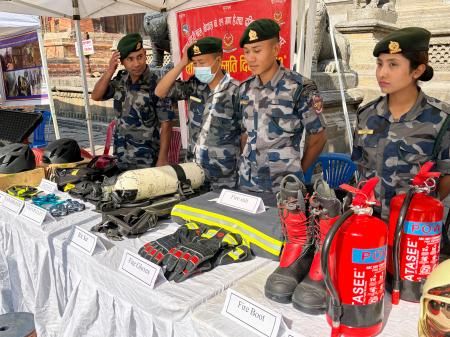Nepal: Strengthening Disaster Preparedness in the Wake of Earthquakes
Nepal's vulnerability to earthquakes is tragically well-documented. The devastating 2015 Gorkha earthquake highlighted the critical need for improved disaster preparedness and resilience. While significant strides have been made, the journey towards a safer Nepal continues. This article explores the ongoing efforts to enhance disaster preparedness, focusing on key strategies and challenges.
Lessons Learned from the 2015 Earthquake
The 2015 earthquake, measuring 7.8 on the Richter scale, left an indelible mark on Nepal. The catastrophic loss of life and widespread destruction exposed critical weaknesses in the country's disaster response mechanisms. Key lessons learned include:
- The need for stricter building codes: Many structures collapsed due to substandard construction. Implementing and enforcing stricter building codes, incorporating earthquake-resistant designs, is paramount.
- Improved early warning systems: While some warning systems existed, their effectiveness was limited. Investing in more sophisticated and accessible early warning systems is crucial.
- Enhanced community-based disaster preparedness: Community participation is vital for effective disaster response. Training and empowering local communities are essential for swift and coordinated action.
- Strengthening search and rescue capabilities: The earthquake exposed the limitations of Nepal's search and rescue capabilities. Investing in training, equipment, and infrastructure is a priority.
- Efficient relief and recovery mechanisms: The post-earthquake relief efforts faced logistical challenges. Improving coordination and streamlining relief distribution are crucial for effective recovery.
Current Initiatives in Disaster Preparedness
Nepal's government and various NGOs are actively working on enhancing disaster preparedness. These initiatives include:
- Strengthening Building Codes and Enforcement: The government is implementing stricter building codes and actively enforcing their implementation, particularly in high-risk areas. This includes training construction workers and engineers in earthquake-resistant techniques.
- Investing in Early Warning Systems: Nepal is investing in advanced seismic monitoring technology and developing community-based early warning systems. This includes public awareness campaigns on how to react to earthquake warnings.
- Community-Based Disaster Risk Reduction (CBDRR): Numerous programs focus on empowering communities through training in first aid, search and rescue, and shelter construction. These programs emphasize community participation and ownership of disaster preparedness initiatives.
- Developing Disaster Response Plans: Detailed disaster response plans are being developed at both national and local levels. These plans outline roles, responsibilities, and procedures for effective disaster management.
- International Collaboration: Nepal actively collaborates with international organizations and countries to enhance its disaster preparedness capabilities. This includes sharing best practices, technological advancements, and financial support.
Challenges Remain
Despite significant progress, several challenges persist:
- Funding limitations: Implementing comprehensive disaster preparedness measures requires substantial financial resources. Securing adequate funding remains a challenge.
- Lack of awareness: Raising public awareness about earthquake risks and preparedness measures is crucial. Ongoing educational campaigns are essential.
- Geographical challenges: Nepal's mountainous terrain poses logistical challenges for delivering aid and conducting rescue operations.
- Enforcement of building codes: Ensuring consistent enforcement of stricter building codes in all areas remains a significant obstacle.
The Path Forward: Building a Resilient Nepal
Building a resilient Nepal requires a multifaceted approach that integrates technological advancements, community participation, and strong institutional frameworks. Continuous investment in infrastructure, training, and public awareness campaigns is crucial. International collaboration will continue to play a vital role in supporting Nepal's efforts. The ultimate goal is to minimize the impact of future earthquakes, safeguarding lives and livelihoods.
Keywords: Nepal earthquake, disaster preparedness, earthquake resilience, building codes, early warning systems, community-based disaster risk reduction, CBDRR, Nepal disaster response, seismic monitoring, post-earthquake recovery, international aid, Nepal reconstruction
(Optional CTA): Learn more about how you can support Nepal's disaster preparedness efforts by visiting [link to relevant organization/website].
